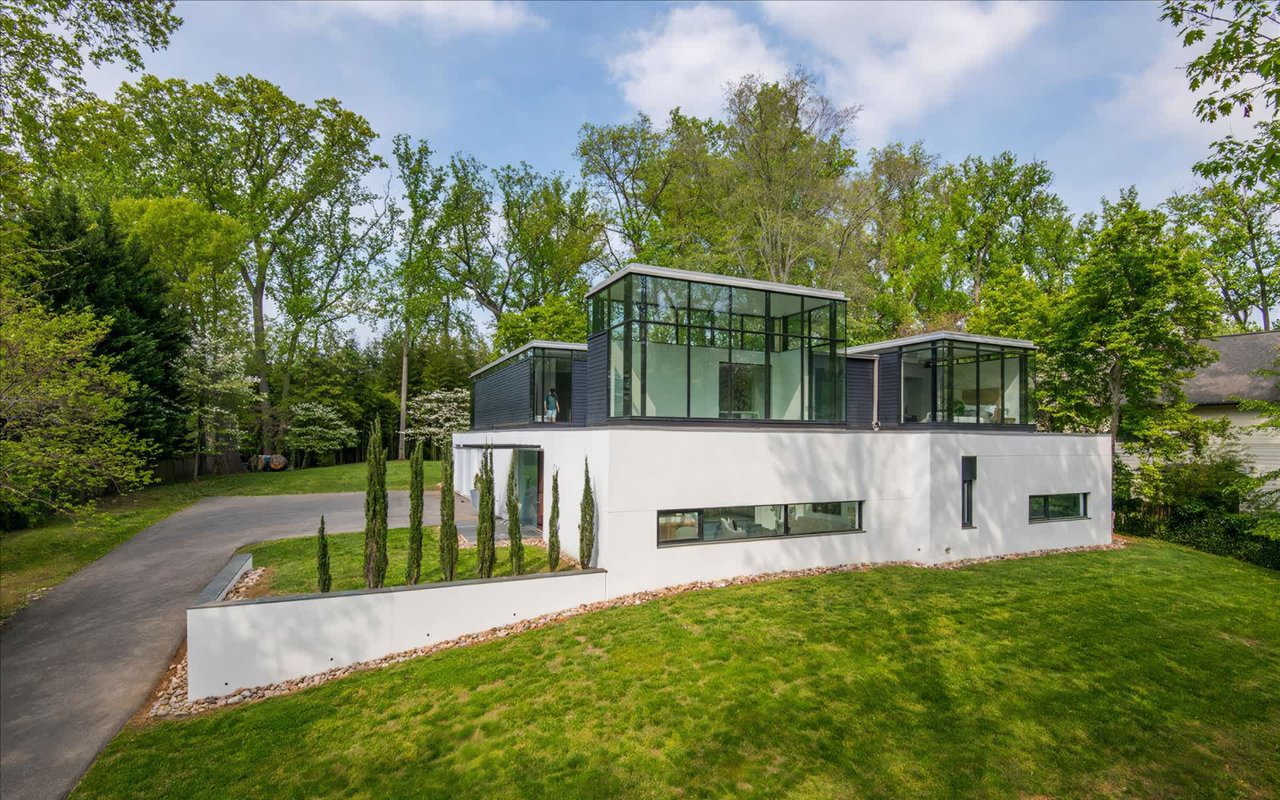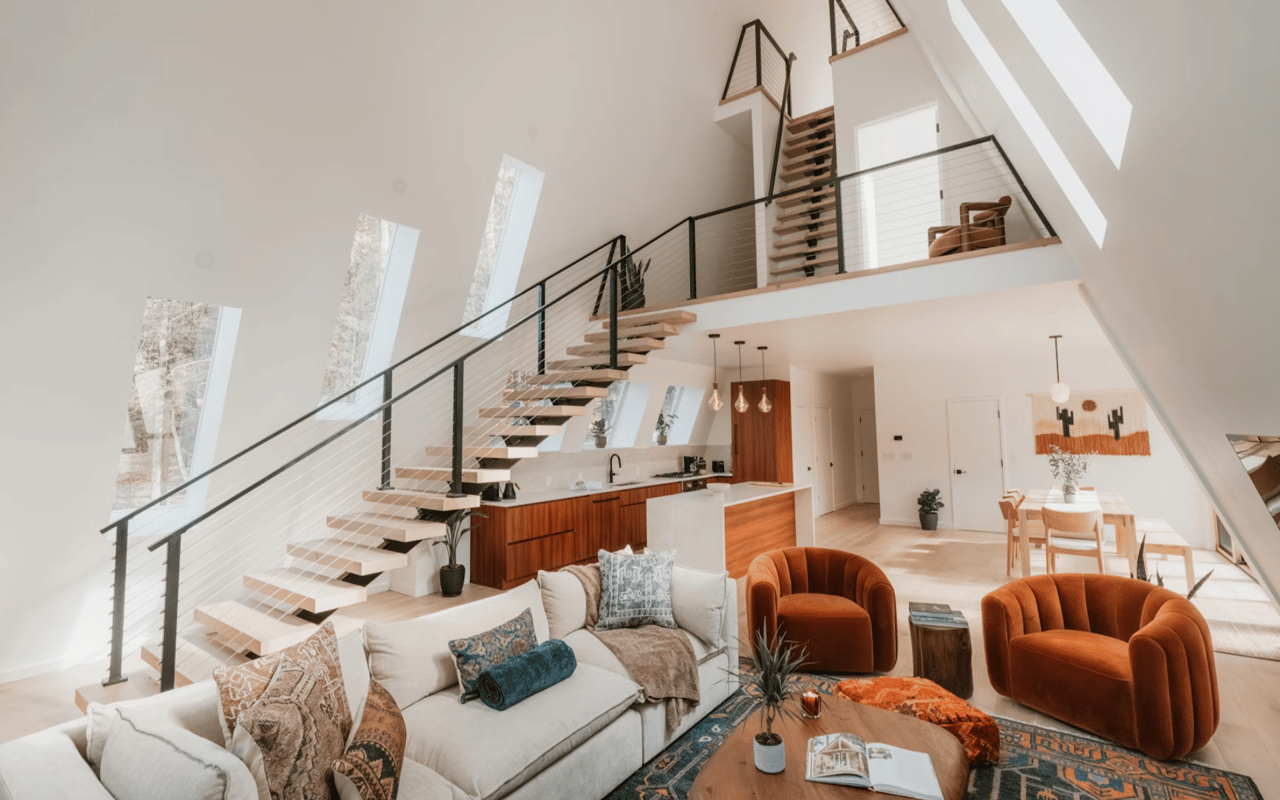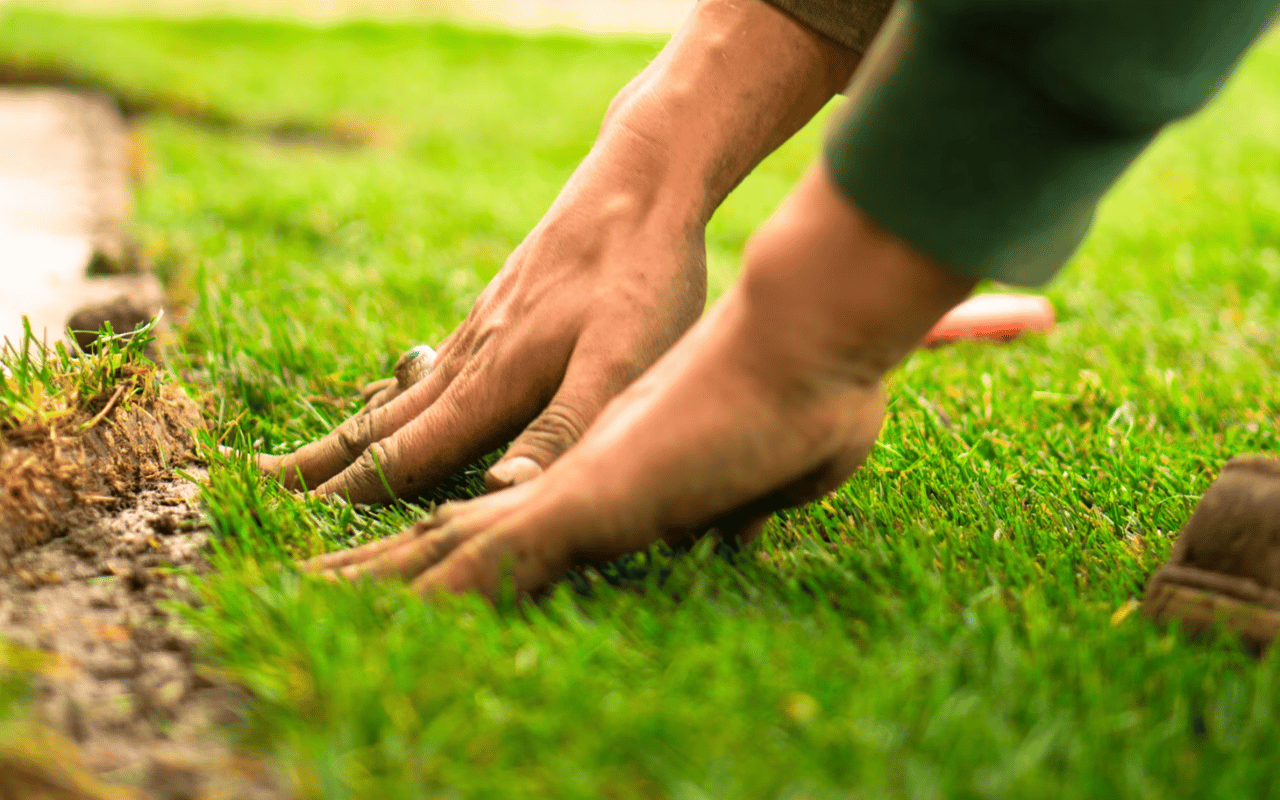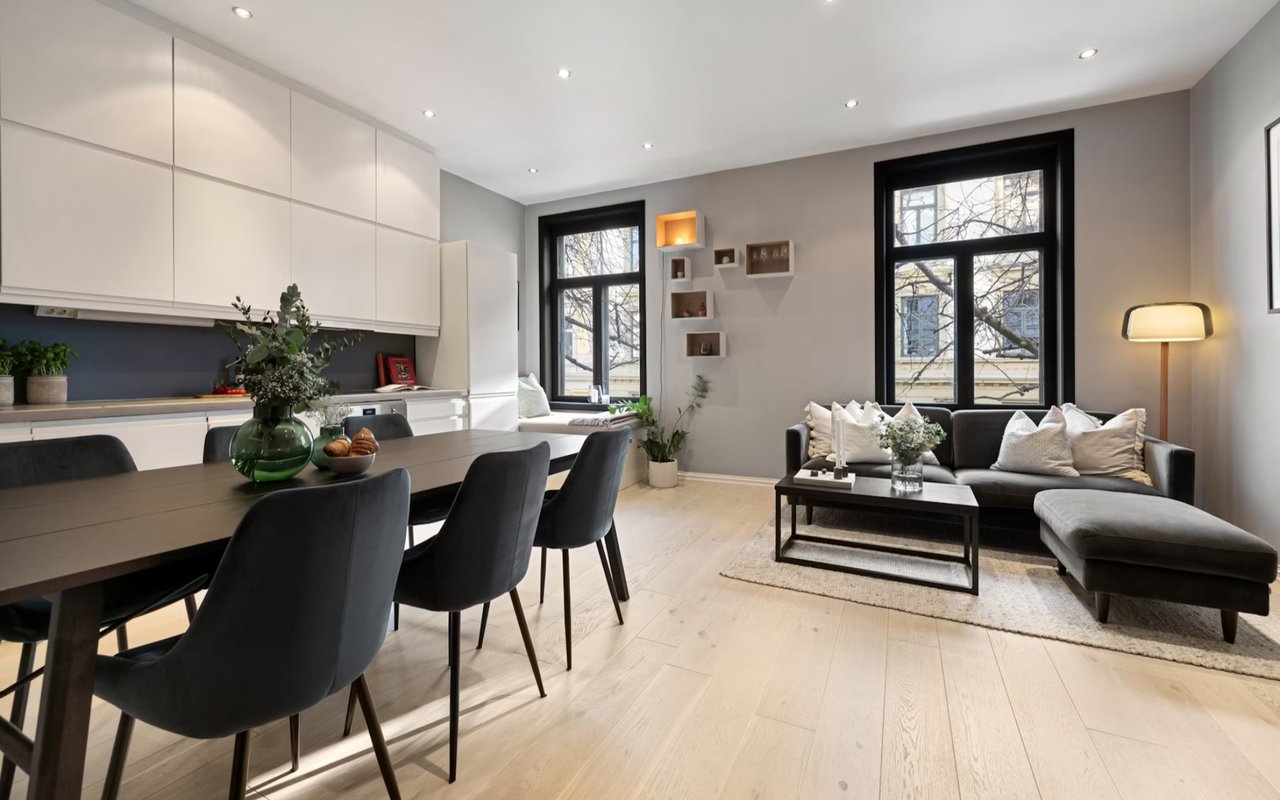As awareness of environmental issues continues to grow, more homeowners in Bethesda, MD, are seeking ways to make their homes more sustainable. Green living not only helps protect the planet but also reduces utility bills and creates healthier living environments. This blog explores the latest sustainable home improvement trends that can help you transform your Bethesda home into an eco-friendly haven.
Energy-Efficient Appliances
One of the most impactful ways to make your home more sustainable is by upgrading to energy-efficient appliances. Modern appliances are designed to use less energy while providing the same or even better performance than their older counterparts. Look for appliances with the ENERGY STAR label, which indicates that they meet strict energy efficiency guidelines set by the U.S. Environmental Protection Agency.
Switching to energy-efficient refrigerators, dishwashers, washing machines, and dryers can significantly reduce your household energy consumption. Additionally, consider investing in energy-efficient heating and cooling systems, such as high-efficiency furnaces, air conditioners, and heat pumps. These systems not only lower energy usage but also improve indoor air quality and overall comfort.
Switching to energy-efficient refrigerators, dishwashers, washing machines, and dryers can significantly reduce your household energy consumption. Additionally, consider investing in energy-efficient heating and cooling systems, such as high-efficiency furnaces, air conditioners, and heat pumps. These systems not only lower energy usage but also improve indoor air quality and overall comfort.
Solar Power
Harnessing the power of the sun is one of the most effective ways to reduce your carbon footprint. Solar panels can be installed on your roof to generate clean, renewable energy for your home. Advances in solar technology have made panels more efficient and affordable, making it an attractive option for many homeowners in Bethesda.
Solar power can significantly reduce or even eliminate your reliance on grid electricity, leading to substantial savings on your energy bills. Many states, including Maryland, offer incentives and tax credits to help offset the initial cost of installing solar panels. Additionally, some solar panel systems allow you to sell excess energy back to the grid, further enhancing the financial benefits.
Solar power can significantly reduce or even eliminate your reliance on grid electricity, leading to substantial savings on your energy bills. Many states, including Maryland, offer incentives and tax credits to help offset the initial cost of installing solar panels. Additionally, some solar panel systems allow you to sell excess energy back to the grid, further enhancing the financial benefits.
Sustainable Building Materials
When it comes to home improvement projects, choosing sustainable building materials is essential for reducing environmental impact. Eco-friendly materials are often made from renewable resources, have lower emissions during production, and are more durable than traditional options.
Bamboo, for instance, is an excellent alternative to hardwood for flooring due to its rapid growth rate and sustainability. Reclaimed wood, recycled metal, and natural stone are also popular choices for eco-conscious homeowners. These materials add unique character to your home while minimizing environmental harm.
For insulation, consider using materials like cellulose, which is made from recycled paper, or sheep's wool, which is natural and biodegradable. Sustainable insulation materials provide excellent thermal performance and help reduce energy consumption by maintaining a consistent indoor temperature.
Bamboo, for instance, is an excellent alternative to hardwood for flooring due to its rapid growth rate and sustainability. Reclaimed wood, recycled metal, and natural stone are also popular choices for eco-conscious homeowners. These materials add unique character to your home while minimizing environmental harm.
For insulation, consider using materials like cellulose, which is made from recycled paper, or sheep's wool, which is natural and biodegradable. Sustainable insulation materials provide excellent thermal performance and help reduce energy consumption by maintaining a consistent indoor temperature.
Water Conservation
Water conservation is another crucial aspect of green living. Implementing water-saving fixtures and practices can significantly reduce water usage and lower utility bills. Low-flow faucets, showerheads, and toilets are designed to use less water without compromising performance.
Installing a rainwater harvesting system is an excellent way to collect and reuse rainwater for irrigation and other non-potable purposes. These systems capture rainwater from your roof and store it in a tank, allowing you to reduce your reliance on municipal water supplies. Drip irrigation systems and smart sprinkler controllers can further enhance water efficiency in your garden by delivering water directly to plant roots and adjusting watering schedules based on weather conditions.
Installing a rainwater harvesting system is an excellent way to collect and reuse rainwater for irrigation and other non-potable purposes. These systems capture rainwater from your roof and store it in a tank, allowing you to reduce your reliance on municipal water supplies. Drip irrigation systems and smart sprinkler controllers can further enhance water efficiency in your garden by delivering water directly to plant roots and adjusting watering schedules based on weather conditions.
Green Roofing
Green roofing, also known as living roofs or vegetative roofs, is a sustainable home improvement trend that involves covering your roof with vegetation. Green roofs provide numerous environmental benefits, including improved insulation, reduced stormwater runoff, and enhanced air quality.
There are two main types of green roofs: extensive and intensive. Extensive green roofs have a shallow soil layer and are planted with low-maintenance, drought-tolerant plants. Intensive green roofs have a deeper soil layer and can support a wider variety of plants, including shrubs and small trees. Both types of green roofs help regulate indoor temperatures, reduce energy consumption, and extend the lifespan of your roofing materials.
There are two main types of green roofs: extensive and intensive. Extensive green roofs have a shallow soil layer and are planted with low-maintenance, drought-tolerant plants. Intensive green roofs have a deeper soil layer and can support a wider variety of plants, including shrubs and small trees. Both types of green roofs help regulate indoor temperatures, reduce energy consumption, and extend the lifespan of your roofing materials.
Energy-Efficient Windows
Upgrading to energy-efficient windows is an effective way to improve your home's energy performance. Modern windows are designed with advanced technologies, such as double or triple glazing, low-emissivity (Low-E) coatings, and insulated frames, to minimize heat transfer and enhance insulation.
Energy-efficient windows help maintain a comfortable indoor temperature by preventing heat loss in the winter and reducing heat gain in the summer. This can lead to lower heating and cooling costs and a more sustainable home. Additionally, high-performance windows can reduce noise pollution and increase natural light, creating a more pleasant living environment.
Energy-efficient windows help maintain a comfortable indoor temperature by preventing heat loss in the winter and reducing heat gain in the summer. This can lead to lower heating and cooling costs and a more sustainable home. Additionally, high-performance windows can reduce noise pollution and increase natural light, creating a more pleasant living environment.
Smart Home Technology
Integrating smart home technology into your sustainable living plan can further enhance energy efficiency and convenience. Smart thermostats, for example, allow you to control your home's heating and cooling systems remotely and optimize energy usage based on your schedule and preferences. These devices can learn your habits and make automatic adjustments, ensuring optimal comfort while minimizing energy consumption.
Smart lighting systems enable you to control your lights from your smartphone or voice-activated assistant, allowing you to turn off lights remotely and set schedules to reduce energy waste. Smart power strips and outlets can help you manage and monitor the energy usage of your electronic devices, preventing standby power consumption and reducing overall energy use.
Smart lighting systems enable you to control your lights from your smartphone or voice-activated assistant, allowing you to turn off lights remotely and set schedules to reduce energy waste. Smart power strips and outlets can help you manage and monitor the energy usage of your electronic devices, preventing standby power consumption and reducing overall energy use.
Indoor Air Quality
Improving indoor air quality is an essential component of green living. Using non-toxic, low-VOC (volatile organic compound) paints, finishes, and building materials can reduce harmful emissions and create a healthier indoor environment. Houseplants can also improve air quality by absorbing pollutants and releasing oxygen.
Proper ventilation is crucial for maintaining good indoor air quality. Consider installing energy recovery ventilators (ERVs) or heat recovery ventilators (HRVs) to bring fresh air into your home while minimizing energy loss. These systems exchange stale indoor air with fresh outdoor air, helping to remove contaminants and regulate humidity levels.
Proper ventilation is crucial for maintaining good indoor air quality. Consider installing energy recovery ventilators (ERVs) or heat recovery ventilators (HRVs) to bring fresh air into your home while minimizing energy loss. These systems exchange stale indoor air with fresh outdoor air, helping to remove contaminants and regulate humidity levels.
Sustainable Landscaping
Sustainable landscaping practices can enhance the beauty of your property while reducing environmental impact. Native plants, which are adapted to the local climate, require less water and maintenance than non-native species. Xeriscaping, a landscaping method that emphasizes water conservation, involves using drought-tolerant plants, mulch, and efficient irrigation techniques to create a low-water-use landscape.
Composting yard waste and kitchen scraps is an excellent way to create nutrient-rich soil for your garden while reducing landfill waste. Organic gardening practices, such as using natural fertilizers and pest control methods, promote healthy soil and plant growth without the use of harmful chemicals.
Composting yard waste and kitchen scraps is an excellent way to create nutrient-rich soil for your garden while reducing landfill waste. Organic gardening practices, such as using natural fertilizers and pest control methods, promote healthy soil and plant growth without the use of harmful chemicals.
Your Next Steps
Embracing sustainable home improvement trends in Bethesda, MD, can lead to a more eco-friendly, cost-effective, and comfortable living environment. From energy-efficient appliances and solar power to green roofing and smart home technology, there are numerous ways to make your home more sustainable.
For more information on sustainable living and real estate opportunities in Bethesda, reach out to The Sky Group. Contact The Sky Group today to learn more about Bethesda, MD, real estate and find the perfect eco-friendly home for your family.
*Header photo courtesy of The Sky Group’s website
For more information on sustainable living and real estate opportunities in Bethesda, reach out to The Sky Group. Contact The Sky Group today to learn more about Bethesda, MD, real estate and find the perfect eco-friendly home for your family.
*Header photo courtesy of The Sky Group’s website




